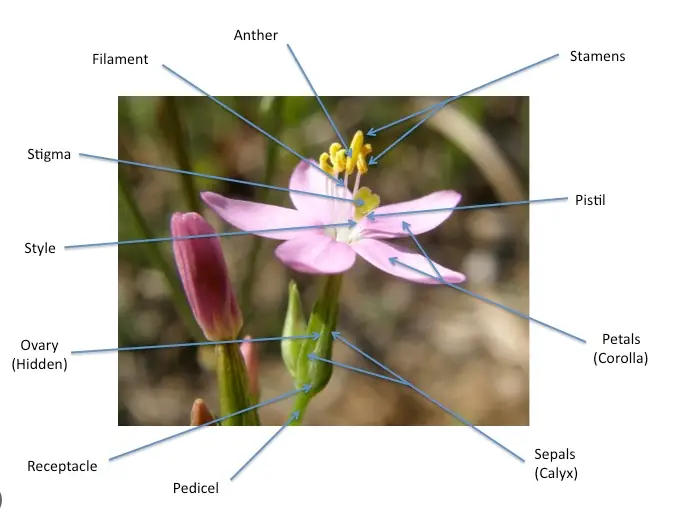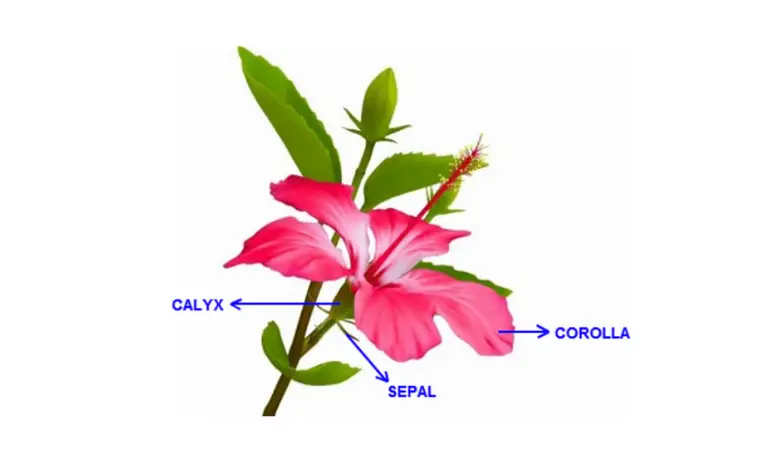Flowers, the crowning jewels of the plant kingdom, are composed of various structural parts, each serving a unique purpose. Among these, the calyx and corolla are not only fundamental to the anatomy of a flower but also crucial to its reproductive success and aesthetic appeal. Each part, though distinct, plays a pivotal role in the lifecycle of a plant.
The calyx is the outermost whorl of a flower, consisting of units called sepals. Typically green, sepals protect the developing bud before it blooms. The corolla, on the other hand, is made up of petals, often vividly colored, and works to attract pollinators with its striking appearance and scent. Together, the calyx and corolla facilitate a plant’s reproductive processes by protecting reproductive organs and enticing pollinator visits.
These floral components not only ensure the survival of their species by maximizing reproductive success but also contribute to the biodiversity that enriches our planet. They are pivotal in ecological balance, providing essential services from supporting pollinators to contributing to the visual landscape that humans and wildlife alike depend on.

Flower Structure Basics
Flowers are not just beautiful parts of nature; they are complex reproductive structures of plants. Each component plays a critical role in the plant’s reproductive cycle, ensuring the continuation of plant species.
Key Parts of a Flower
A typical flower consists of several key components, each with a specific function:
- Roots: Anchor the plant and absorb water and nutrients.
- Stem: Supports the flower and transports nutrients.
- Leaves: Engage in photosynthesis, creating food for the plant.
- Flower: The reproductive unit of the plant, consisting of several parts:
- Calyx: Made up of sepals.
- Corolla: Composed of petals.
- Stamen: The male reproductive part.
- Pistil: The female reproductive part.
Roles in Plant Reproduction
The flower’s main role is to ensure reproduction through the production of seeds. Here’s how the parts work together in this crucial process:
- Pollination: Transfer of pollen from stamen to pistil.
- Fertilization: Union of pollen and ovule in the pistil.
- Seed Development: Post-fertilization, seeds develop within the protected environment of the flower.
- Seed Dispersal: Seeds are spread through various mechanisms like wind, water, and animals.
What is Calyx?
Definition and Characteristics
The calyx is the outermost part of a flower’s structure, composed of units known as sepals. Typically green, sepals look similar to leaves and encase the developing bud.
Function in Flowers
The calyx serves several important functions:
- Protection: It protects the flower bud from mechanical injuries and pests.
- Support: During blooming, it supports the petals and provides a base for the flower structure.
What is Corolla?
Definition and Characteristics
The corolla is made up of petals, which are often bright and colorful. It is located just inside the calyx and plays a central role in attracting pollinators.
Function in Flowers
The corolla has crucial functions that facilitate reproduction:
- Attraction: Bright colors and sweet scents draw in pollinators.
- Protection: It shields the inner reproductive parts of the flower.
Calyx vs Corolla
Structural Differences
While both are essential to the flower’s anatomy, the calyx and corolla differ significantly:
- Material: Calyx is leaf-like and green; corolla is softer and more colorful.
- Position: Calyx forms the outer cover; corolla sits just inside the calyx.
Functional Differences
Their roles also vary distinctly:
- Calyx: Focuses on protection and structural integrity.
- Corolla: Aims to attract pollinators with visual cues and scents.
Role in Plant Aesthetics
In the grand scheme of plant aesthetics, both the calyx and corolla are essential:
- Calyx: Provides a contrasting backdrop, enhancing the visibility of the corolla.
- Corolla: Offers aesthetic appeal that encourages interaction with pollinators.
Biological Significance
The calyx and corolla are not merely ornamental components of flowers but play pivotal roles in plant health and survival. Their design and functionality are critical for the successful reproduction and long-term resilience of plant species.
Contribution to Plant Health
The calyx and corolla contribute significantly to the overall health of plants:
- Calyx: Protects the developing flower bud from environmental stresses such as wind, rain, and temperature fluctuations. This protective role ensures that the reproductive parts of the plant develop optimally.
- Corolla: By attracting pollinators, the corolla boosts the chances of successful pollination. This not only affects the health of individual plants but also supports the genetic diversity of the species.
Impact on Reproduction
Reproduction is the most crucial phase in the life cycle of a plant, and both the calyx and corolla are fundamental to this process:
- Pollinator Attraction: The corolla’s vivid colors and inviting scents draw a variety of pollinators, which are essential for transferring pollen from one flower to another.
- Seed Formation and Dispersal: After pollination, the calyx sometimes continues to encase and protect the developing seeds, ensuring they can mature and disperse without harm.
Evolutionary Perspectives
The features of the calyx and corolla have evolved significantly over millions of years, adapting to the needs of plants in diverse ecosystems.
Adaptations Over Time
- Calyx: In some species, the sepals have evolved to become spiny or sticky, which deters herbivores and minimizes damage to the reproductive organs.
- Corolla: The development of UV patterns on the petals, only visible to insects like bees, is an adaptation that enhances pollination efficiency.
Variations Across Species
Different environmental conditions have led to remarkable variations in the structure of the calyx and corolla among plant species:
- Desert Plants: Thicker sepals to reduce water loss.
- Orchids: Highly specialized petal shapes to facilitate specific pollinator interactions.
Practical Applications
The understanding of calyx and corolla structures extends beyond biological interest and has practical applications in agriculture, horticulture, and environmental management.
Horticulture and Breeding
Gardeners and plant breeders utilize knowledge of calyx and corolla to cultivate new varieties with desired traits:
- Aesthetic Improvements: Breeding for varied and vibrant petal colors and patterns.
- Disease Resistance: Selective breeding to develop robust sepals that better protect the flower.
Ecological Impact
The ecological impacts of calyx and corolla adaptations are profound, influencing not only the plants themselves but also their ecosystems:
- Biodiversity Support: By ensuring effective pollination, these flower parts support the life cycles of numerous insects and animals.
- Ecosystem Services: Flowers contribute to air purification, soil stabilization, and water cycle regulation.
FAQs
What is the calyx of a flower?
The calyx of a flower is the outermost whorl consisting of sepals, which are typically green. Its primary function is to protect the flower bud as it develops and before it opens. This structural component plays a crucial role in the lifecycle of the plant by safeguarding the reproductive structures from environmental threats and potential predators.
How does the corolla differ from the calyx?
The corolla differs from the calyx in both form and function. Composed of petals, the corolla is generally more colorful and visually striking than the green, leaf-like sepals of the calyx. The primary role of the corolla is to attract pollinators through its vivid colors and scent, aiding in the plant’s reproductive process.
Why are calyx and corolla important for a flower?
The calyx and corolla are vital for a flower’s reproduction and protection. The calyx shields the developing buds from mechanical injuries and harsh climatic conditions, while the corolla attracts pollinators with its bright colors and scent, which is essential for the cross-pollination needed for producing seeds.
Can a flower function without a calyx or corolla?
While some flowers can function and reproduce without a calyx or corolla, these structures generally enhance a plant’s reproductive efficiency. Flowers lacking one or both of these might rely on different mechanisms for protection and pollinator attraction, such as bracts or increased reproductive output.
Conclusion
In summary, the calyx and corolla are not merely decorative elements but are critical to the survival and reproductive strategies of flowering plants. These structures perform essential roles that enhance the plant’s ability to attract pollinators, protect delicate reproductive organs, and ensure the continuation of species. The complexity and elegance of these floral parts highlight the intricate relationships within ecosystems and underscore the adaptive genius of nature.
Through understanding the roles and significance of the calyx and corolla, we gain insights into the broader ecological and evolutionary narratives that shape our natural world. Their study not only deepens our appreciation of plant biology but also informs conservation efforts, ensuring that future generations may continue to enjoy and benefit from the biodiversity of our planet.

